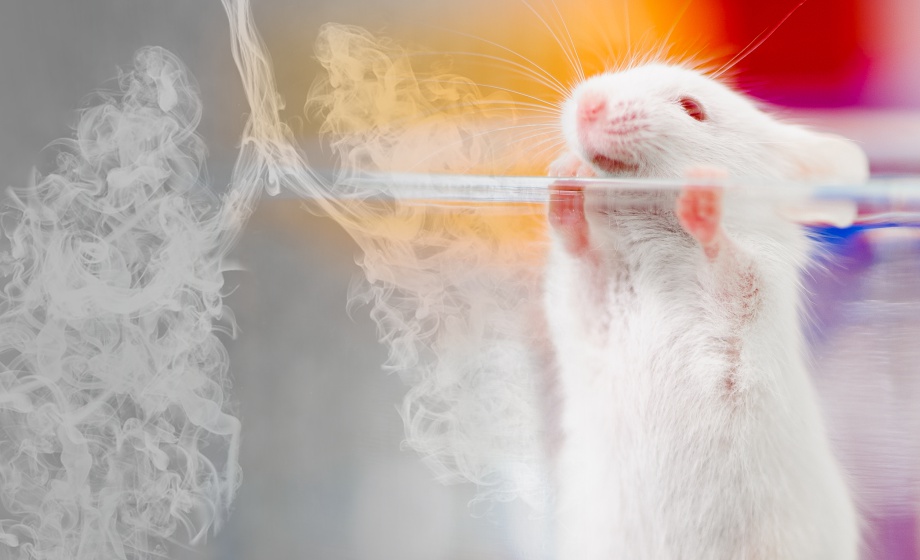Q&A Report: Cardiac Effects of Chronically Inhaled Nicotine

These answers were provided by:
Jason Gardner, PhD
Professor
Physiology
LSU Health Sciences Center – New Orleans
Did the week one to week four increase then decrease in BP result from physiological adaptations?
It seems likely that is the case. Several publications show increased systemic BP over a similar time frame, but do not continue exposure as long as we did here.
With increasing ACE in the RV - would you expect increased susceptibility to SARS-CoV-2 induced inflammation in the RV?
For this, I think we would have to look into the cell-specific expression changes and focus on the pulmonary epithelium. It is an interesting question, particularly since some studies have shown reduced ACE2 in response to smoking and nicotine, while others show increased ACE2. More research in this area is needed.
Did you analyze lung/pulmonary vessels abnormalities by any chance in the same mice where you studied RV?
We did. In the Oakes, et al. Hypertension 2020 we present histological evidence of increased muscularization of small arteries in the lung. Given the RVSP increase, we really expected more lung injury and remodeling. We might have produced more lung injury by extending the exposure protocol.
Did you compare the amount of nicotine in the atmosphere of combustion tobacco (smoking) vs. sub-combustion tobacco (ENDS)?
We did not measure the nicotine conc in the chambers. Instead, we used cotinine as a marker of exposure. Take a look at the manuscript by Gilpin, et al., 2014 PMID: 23240929. They utilize the same system in a few publications, and I believe they may have estimated nicotine conc. Granted those studies are in rats and the system settings may differ.
Based on your research, would say that nicotine is the main constitute in e-cigarette and other vaping products that is responsible for the majority of CVS impairments?
I would definitely conclude that nicotine is not as innocuous as we once thought, aside from the addictive effects. However, flavorings, vg/pg and even the metal constituents released from the heating elements of vaping devices also contribute. The every changing range of products and the FDA regulations make it challenging to keep up. For some additional interesting studies on vaping and CV/Pulm effects, check out the work by my colleagues Loren Wold (Ohio State) and Alexandra Noel (Louisiana State Univ).
In addition to nCHR and angiotensin receptor, do you think that other nicotine mediated receptors activation?
I believe that other nicotine receptors would be activated. We focused on the alpha7 due to it’s high expression in several cardiac, pulmonary and vascular cell types and its link to RAS signaling pathways and regulation.
Have you looked into the effects of alpha-7 agonists or antagonists on RAS activation?
We have not. Solid idea though!
You find a transient effect on systemic blood pressure, but a sustained effect on pulmonary blood pressure. Could you perhaps elaborate on this difference. Does it reflect a higher concentration of nicotine in the lungs, and thus a local effect, i.e. would you expect to find the same results if nicotine was infused?
I do believe that the effects we found on RVSP and pulmonary hypertension are unique to inhaled exposure and would not occur in response to other methods of exposure, such as transdermal, minipump infusion, or drinking water. The effects we have are likely driven by changes in the pulmonary vasculature. We have submitted for publication a set of studies that delves further into endothelial dysfunction as a potential mechanism for the elevated RVSP and presumed pulmonary hypertension.
Have you measured diastolic cardiac function? In addition, what about lung weight?
We didn’t find significant changes in the diastolic functional measure that we made, although there are more sensitive catheterization approaches that could be used and are worth trying. We did measure lung wet weight in one of our studies following 12 wks for nicotine inhalation exposure and found no significant changes. These data are not yet published, but will be part of an upcoming manuscript.
What is the effect on lung structure in these mice - fibrosis, inflammation?
We did not find any notable fibrosis and did not find any increase in inflammatory cells from bronchiolar lavage. Those data are in the Supplemental Material for Oakes, et al. 2020 Hypertension.
Does nicotine have direct effect on heart or mainly because of the pulmonary hypertension?
Our current data suggests that the effects on the heart are driven by changes in pulmonary vasculature, although we certainly cannot rule out the possibility of direct effects also contributing.
Are nicotine effects on pulmonary hypertension and RV age-dependent?
We have not studied age as a factor. Loren Wold (Ohio State) has focused on adolescent exposure to vape and his group has found a left-heart phenotype, which certainly suggests that age matters when it comes to nicotine exposure.
Could you comment on the return to normal of SBP vs controls after a few weeks of chronic nicotine exposure? Of what relevance would this be in practice?
I believe what is important is that we have to be careful when considering the effects of acute versus chronic exposure. Experimental design should include both, as the body is quite good at adapting to different challenges. Clinically, I would take our findings to indicate that inhalation of nicotine is potentially quite damaging, even without the particular and other toxic components associated with tobacco smoke.
Have you considered evaluating the effects in an aged model to determine if removal of the nicotine is still reversable?
Great question. I would like to perform withdrawal studies to determine if the RVSP/Pulm hypertension is reversable. Definitely worth investigating.